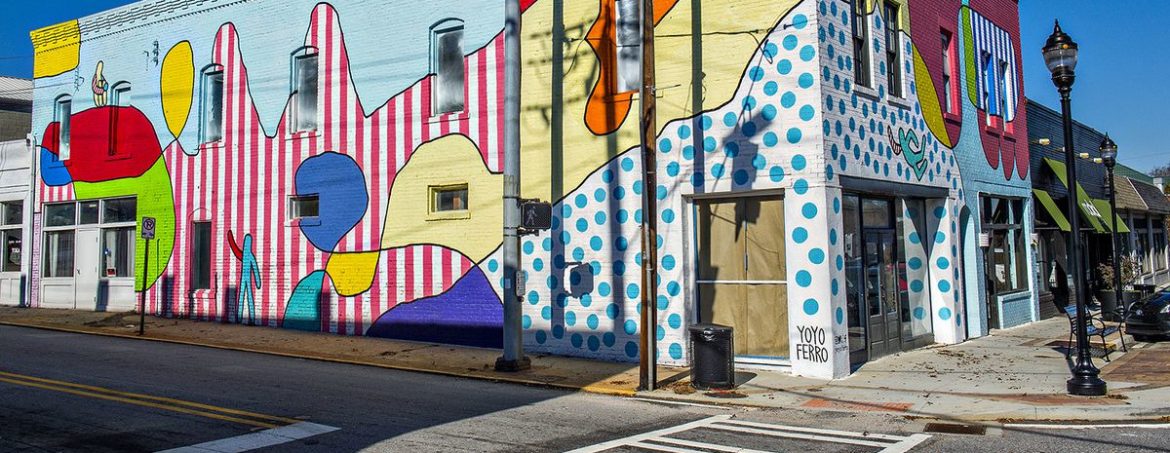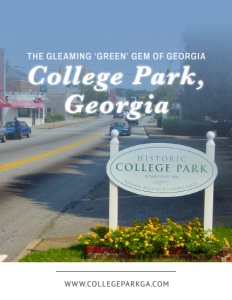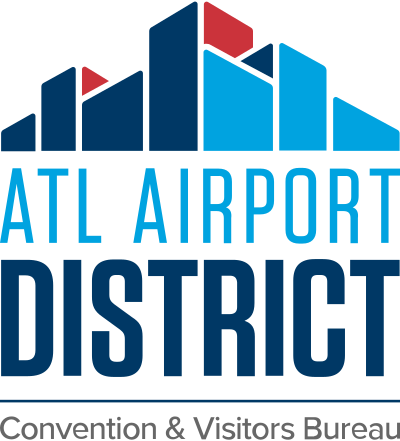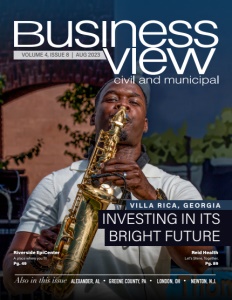College Park, Georgia
The gleaming ‘green’ gem of Georgia
Navigating a green future with a resilient workforce, College Park remains one to watch
Perched at the nexus of a buzzing urban landscape and intimate community charm, College Park, Georgia, is a hidden gem amidst the surrounding municipalities of metropolitan Atlanta. Nestled in the shadows of the globally renowned Hartsfield-Jackson Atlanta International Airport, it is a city that defies expectations. A microcosm where global air routes merge with hometown streets, it makes a grand statement about the intersection of the local and the international.
College Park boasts a unique distinction, as Mayor Bianca Motley Broom describes – it literally embraces a portion of the world’s busiest and most efficient airport within its city limits. This small city of less than 15,000 residents is a hub of arrival and departure gates, part of the airport’s heartbeat that pulses with the rhythm of a worldwide tempo.
The city doesn’t end there. It extends beyond the runway lights to envelop the Georgia International Convention Center, the second-largest convention center in the state, and a state-of-the-art arena that sprung to life in the fall of 2019. This blend of infrastructure offers a distinct versatility that few communities of its size can parallel. It’s a place where you can land an international flight in the morning, conduct a business meeting in the afternoon, and enjoy a live concert at night, all within a few square miles.
The City’s Pulse: Georgia International Convention Center and Gateway Arena
“College Park is home to the second-largest convention center in the state, the Georgia International Convention Center, boasting a 40,000 square foot ballroom. The entire building, an impressive 500,000 square foot structure, plays host to over 500 events per year,” explains Mercedes Miller, the center’s Executive Director. A colorful and varied array of happenings unfold here, from corporate events to sporting tournaments to hair shows, all contributing to the city’s unique character and vibrancy.
Nearly a million people per year flood into this epicenter of activity, adding to the steady hum of College Park’s lively social scene. But the offerings are not just limited to the convention center. “We also have the Gateway Arena, a 90,000-square-foot entertainment hub. While it was forced into hibernation during the Covid-19 pandemic, it’s rebounding with gusto,” Miller says, outlining the events hosted there, which include the Dream Plays during basketball season, WNBA games, G-league games for the NBA, and concerts.
These establishments do more than just add color and variety to the city. They serve as a powerful magnet for tourism, contributing to the high occupancy rates of the approximately 3,800 rooms within a five-mile radius. “Our occupancy rates run between 64% and 70%, one of the highest in the city,” says Miller. These institutions are integral parts of the Atlanta Convention and Visitors Bureau, as well as their local bureau, the ATL District Destination Marketing Organization. The symbiotic relationship between these establishments, local transportation, hotels, and the airport creates a seamless experience for visitors.
A Nexus of Connectivity: Airports, Golf Courses, and Bridges
“The Hartsfield-Jackson Atlanta International Airport is one of our biggest partners,” Miller reveals, underscoring the symbiotic relationship between the city and one of the world’s busiest airports. The airport doesn’t simply exist alongside the city – it is intrinsically intertwined with the city’s fabric. “You can get off your plane, catch the ATL Skytrain, and be at the convention center in less than five minutes,” Miller elucidates. The immediate proximity and easy accessibility are unique features few cities can boast of.
However, it’s not all about airports and convention centers. Miller introduces us to a charming facet of College Park’s entertainment scene – the city’s historical golf course. This recreational delight, established in 1929, became a part of the convention center’s repertoire just a year and a half ago and has since been incorporated into its marketing material. “We hold events there, and our clients can have a little fun at the golf course during their events here,” Miller shares.
This vibrant golfing green is soon to be connected to the city by an architecturally intriguing bridge set for completion in late fall. The bridge, a stunning addition to the landscape, is more than just a link – it’s a statement piece that lends a “wow factor” to the city. “As you drive down Camp Creek and you see this red bridge going over, it draws your eyes right to the convention center,” Miller beams.
The planned bridge also connects to College Park, opening up the city’s culinary delights to the convention center’s guests. Miller further explains the convenience of the transportation system, “On the Skytrain, one of the stops is here at the GICC. The next stop is the car rental facility.”
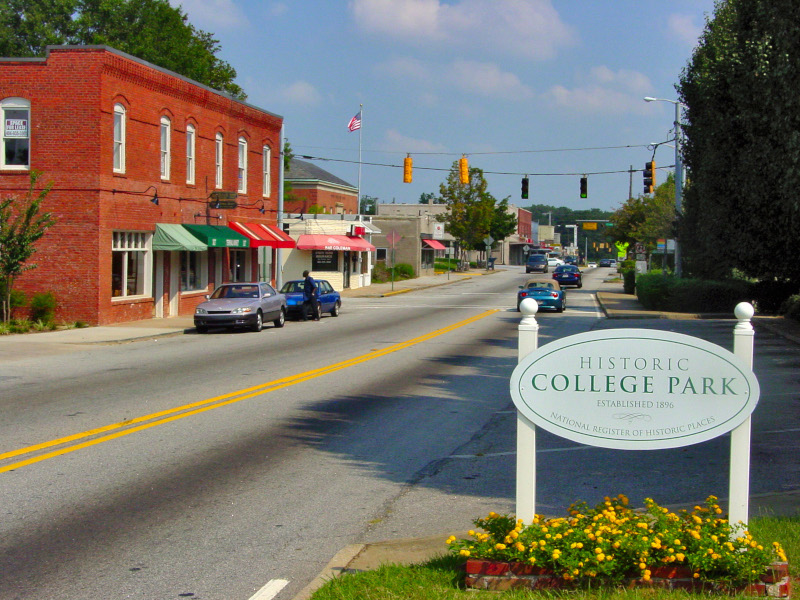 SixWest: The Promising Epicenter of Growth and Development
SixWest: The Promising Epicenter of Growth and Development
College Park’s economic pulse and aspirations center on the ambitious SixWest project. “Our primary focus has been getting investors into our SixWest site,” Michelle Alexander, Economic Development Director for the City of College Park, articulates. The city is currently under contract talks in the hopes to bring this project forward.
When describing SixWest, Alexander paints an inviting picture: “It’s a wide boulevard connecting Camp Creek, running through a major couple hundred-acre site, that’s designed to foster a harmonious mix of retail, commercial, sports, and entertainment sectors.” The site, bound on one side by the city’s hospitality offerings, on the other side by historic College Park and a Marta station, and soon to be home to new residential development, perfectly embodies the city’s vision for a dynamic, well-rounded urban ecosystem.
The excitement surrounding SixWest is palpable. According to Alexander, there’s an inundation of interest in the project. “It’s astounding to me how busy we’re kept reviewing letters of interest,” she shares, adding that the city’s strategy is to ensure the development aligns with the community’s needs. After all, College Park is no stranger to audacious city-planning endeavors. “The city’s sophistication is precisely in the success of the GICC and the arena, spurred by the city’s investment,” Alexander points out.
The Heart of College Park: A Master Plan in Evolution
At the vibrant epicenter of College Park, an ever-evolving master plan charts the course of its growth and development. The master plan is built every few years with the support of the Atlanta Regional Commission through what’s known as Livable Centers initiatives. Spanning the entire expanse of Main Street College Park, the plan also extends further south to an area around Philips Park.
“We’re working on updating our master plan for Philips Park, a former shopping center site that the city now owns,” shares Alexander. This shows a commitment to transforming unused or outdated areas into spaces that could benefit the community and contribute to the city’s growth.
Further north on Main Street, an intriguing new initiative called ‘Finding the Flint’ has emerged.
As Alexander explains, “The headwaters for the Flint River are actually on a site that was owned by Marta, our transit station. The city has partnered with Marta and an organization called Finding the Flint to purchase a seven-acre nature preserve.” This initiative hints at College Park’s dedication to preserving and enhancing natural spaces, even amidst urban development.
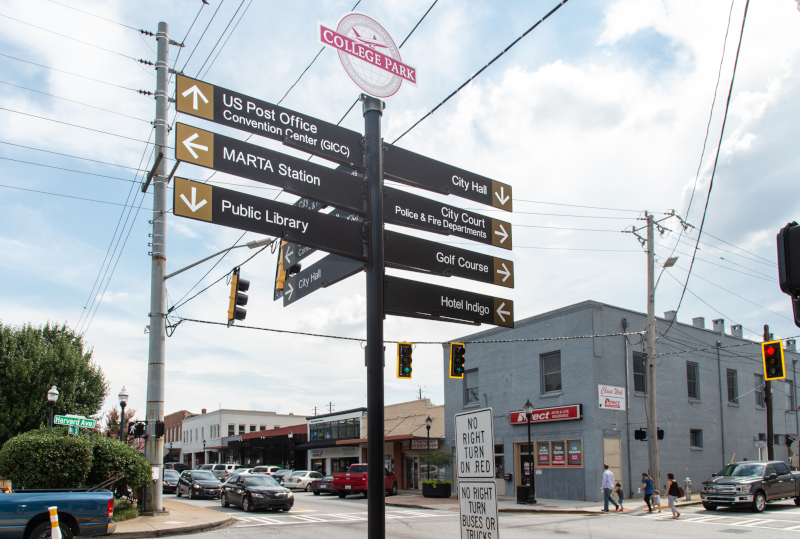
College Park Visit Main St.
Unearthing the Flint and Upgrading Infrastructure: College Park’s Growth Blueprint
Unveiling more details about the ‘Finding the Flint’ initiative, Mayor Motley Broom shares her excitement, calling it a “labor of love”. She emphasizes the project’s aim to connect people with their natural resources, as the Flint River, a vital waterway, lies beneath the Atlanta International Airport.
“We built an airport over a river, and most people don’t know that. The headwaters initiate right here in the Tri-Cities,” states Mayor Motley Broom, highlighting College Park’s part in this geographical curiosity. With this initiative, College Park aims to return a seven-acre tract of land to its natural state, making it a beacon for the community and playing a crucial role in flood mitigation. The Mayor asserts, “How we treat the river here matters to folks downstream.”
Pivoting towards infrastructure projects, the Mayor delightedly shares news of an $800,000 investment in stormwater upgrades—a significant step in dealing with the impacts of climate change on College Park. The city’s leadership is not stopping there. They’re collaborating with state and federal representatives to get the resources required for further vital infrastructure improvements.
When it comes to embracing the future of electric cars, College Park seems well-prepared. They’re part of the Municipal Electric Authority of Georgia, giving them the unique ability to prioritize investments in electric infrastructure. “We have charging facilities at our public safety parking lot. And we’re getting charging stations at the convention center as well,” says Mayor Motley Broom, signifying the beginning of a future where electric vehicles are fully supported throughout the city.
Embracing Green and Growing Stronger: College Park’s Vision for a Sustainability and Resilience
Mayor Motley Broom unveils how College Park is venturing toward a greener future, a move encapsulated by the city’s strategic investments in the Municipal Electric Authority of Georgia (MEA). The MEA, the Mayor notes, has pivoted towards “sustainable and non-emitting resources to generate electricity”, with substantial investments in solar power and Plant Vogel, signaling an exhilarating new chapter for the city’s energy sector.
Further underscoring the city’s commitment to environmental responsibility, the Mayor highlights the pedestrian bridge project. This initiative encourages residents to opt for non-motorized transportation, whether on foot, bike, or even a golf cart. She makes it clear: “We want to make it easier for people to move through our city and have access to resources.”
Turning to College Park’s workforce, Alexander elaborates on the importance of strategic partnerships for overcoming workforce shortages. The city collaborates with Fulton and Clayton Counties and the Fulton County Board of Education, which are investing in a middle college program. Set to open in 2024, the program aligns the technical needs of local industries with practical experience and certifications.
This, Alexander explains, is achieved through “deepening our relationships with the corporate world and what they need for the workforce.”
With eyes set firmly on the future, Mayor Motley Broom outlines her top focus for the second half of 2023: to extend the city’s reach and influence, despite its size. She sees College Park as a beacon of potential—a gem waiting to shine brighter.
The Mayor closes with a powerful call: “The south side is the right side. It is ripe for investment, ripe for partnerships. Now is the time.”
AT A GLANCE
College Park, Georgia
What: A small city that punches way above its weight
Where: College Park, GA
Website: https://www.collegeparkga.com/
